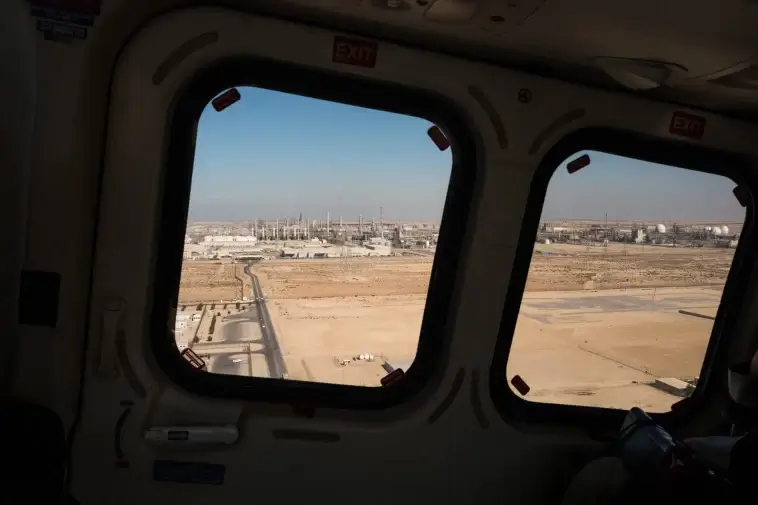In August, a petrochemical company with a plant in Saudi Arabia was hit by a new kind of cyberassault. The attack was not designed to simply destroy data or shut down the plant, investigators believe. It was meant to sabotage the firm’s operations and trigger an explosion.
The attack was a dangerous escalation in international hacking, as faceless enemies demonstrated both the drive and the ability to inflict serious physical damage. And United States government officials, their allies, and cybersecurity researchers worry that the culprits could replicate it in other countries since thousands of industrial plants all over the world rely on the same American-engineered computer systems that were compromised.
Investigators have been tight-lipped about the August attack. They still won’t identify the company or the country where it is based and have not identified the culprits.
But the attackers were sophisticated and had plenty of time and resources, an indication that they were most likely supported by a government, according to more than a dozen people, including cybersecurity experts who have looked into the attack and asked not to be identified because of the confidentiality of the continuing investigation.
The only thing that prevented an explosion was a mistake in the attackers’ computer code, the investigators said.
The assault was the most alarming in a string of hacking attacks on petrochemical plants in Saudi Arabia. In January 2017, computers went dark at the National Industrialization Company, Tasnee for short, which is one of the few privately owned Saudi petrochemical companies. Computers also crashed 15 miles away at Sadara Chemical Company, a joint venture between the oil and chemical giants Saudi Aramco and Dow Chemical.
Within minutes of the attack at Tasnee, the hard drives inside the company’s computers were destroyed and their data wiped clean, replaced with an image of Alan Kurdi, the small Syrian child who drowned off the coast of Turkey during his family’s attempt to flee that country’s civil war.
The intent of the January attacks, Tasnee officials and researchers at the security company Symantec believe was to inflict lasting damage on the petrochemical companies and send a political message. Recovery took months.
Energy experts said the August attack could have been an attempt to complicate Crown Prince Mohammed bin Salman’s plans to encourage foreign and domestic private investment to diversify the Saudi economy and produce jobs for the country’s growing youth population.
“Not only is it an attack on the private sector, which is being touted to help promote growth in the Saudi economy, but it is also focused on the petrochemical sector, which is a core part of the Saudi economy,” said Amy Myers Jaffe, an expert on Middle East energy at the Council on Foreign Relations.
Saudi Arabia has cut oil exports in recent years to support global oil prices, a strategy central to its efforts to make a potential public offering of shares of government-controlled Saudi Aramco more attractive to international investors. The kingdom has tried to compensate for its lost revenue by expanding its petrochemical and refining industry.
Some technical details of the attack in August have been previously reported, but this is the first time the earlier attacks on Tasnee and other Saudi petrochemical companies have been reported.
Security analysts at Mandiant, a division of the security firm FireEye, are still investigating what happened in August, with the help of several companies in the United States that investigate cyberattacks on industrial control systems.
A team at Schneider Electric, which made the industrial systems that were targeted, called Triconex safety controllers, is also looking into the attack, the people who spoke to The Times said. So are the National Security Agency, the F.B.I., the Department of Homeland Security, and the Pentagon’s Defense Advanced Research Projects Agency, which has been supporting research into forensic tools designed to assist hacking investigations.
All of the investigators believe the attack was most likely intended to cause an explosion that would have killed people. In the last few years, explosions at petrochemical plants in China and Mexico — though not triggered by hackers — have killed several employees, injured hundreds, and forced evacuations of surrounding communities.
What worries investigators and intelligence analysts the most is that the attackers compromised Schneider’s Triconex controllers, which keep equipment operating safely by performing tasks like regulating voltage, pressure, and temperatures. Those controllers are used in about 18,000 plants around the world, including nuclear and water treatment facilities, oil and gas refineries, and chemical plants.
“If attackers developed a technique against Schneider equipment in Saudi Arabia, they could very well deploy the same technique here in the United States,” said James A. Lewis, a cybersecurity expert at the Center for Strategic and International Studies, a Washington think tank.
The Triconex system was believed to be a “lock and key operation.” In other words, the safety controllers could be tweaked or dismantled only with physical contact.





